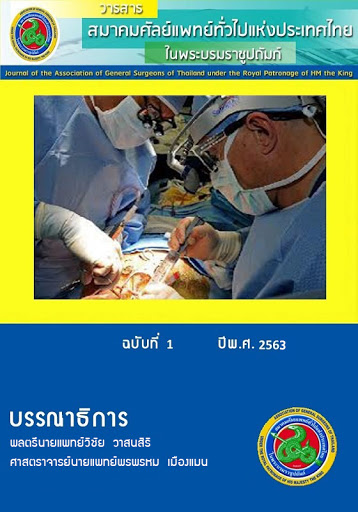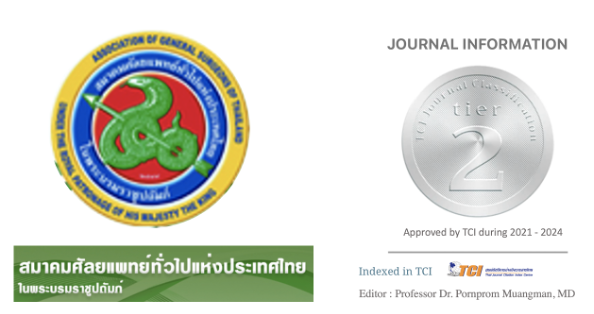Early Versus Delayed Laparoscopic Cholecystectomy for the Management of Acute Cholecystitis
A Retrospective Review in Bangkok Metropolitan Administration General Hospital
Keywords:
laparoscopic, cholecystectomy, acute cholecystitisAbstract
Background: Laparoscopic cholecystectomy (LC) is the gold standard for the management of acute cholecystitis. But timing for surgery is controversy depending on the severity of the disease and familiarity of the surgeon to the operation. According to Tokyo Guideline 2018, suggest early laparoscopic cholecystectomy (early LC) in mild form of acute cholecystitis, but decision to perform early LC in moderate form of acute cholecystitis is depended on the expertized of surgeon and clinical status of patients. In Thailand, there is limited data of the outcomes of these 2 choices of operation.
Objective: This study aimed to compare complication rate (bile duct injury, surgical site infection, and intraabdominal collection) and conversion rate of early versus delayed laparoscopic cholecystectomy (delayed LC) for the management of acute cholecystitis.
Methods: We retrospectively reviewed 170 patients with the diagnosis of acute cholecystitis in mild and moderate severity (76 patients in early LC group and 94 patients in delayed LC group) that admit to department of surgery, Bangkok Metropolitan Administration General Hospital between January 2015 to November 2019.
Results: There is no significant difference between early LC and delayed LC in term of bile duct injury (1.3% vs 1.1%, p = 0.88), surgical site infection (3.9% vs 1.1%, p = 0.326), intra-abdominal collection (2.6% vs 0%, p = 0.198), operative time (92 minutes vs 86 minutes, p = 0.318), and conversion rate (14.5% vs 5.3%, p = 0.63). Mean post-operative length of hospital stay was shorter in delayed LC group (6 days vs 3 days, p = 0.001). And there is 1 re-admission in delayed LC group.
Conclusion: Early laparoscopic cholecystectomy is safe modality for the management of acute cholecystitis in mild and moderate severity with not increase in complication rate.




